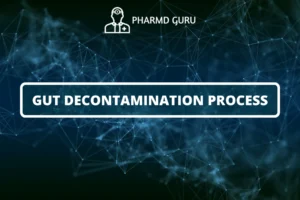Venomous snake bites are a significant medical concern, particularly in regions where venomous snakes are prevalent.
SCROLL DOWN TO THE BOTTOM OF THE PAGE FOR ACTUAL NOTES
TABLE OF CONTENTS:
- Introduction
- Families of Venomous Snakes
- Clinical Effects of Snake Venom
- General Management as First Aid
- Early Manifestations and Complications
- Snake Bite Injuries
1. Introduction
Venomous snake bites are a significant medical concern, particularly in regions where venomous snakes are prevalent. Understanding the families of venomous snakes, the clinical effects of their venom, and implementing appropriate first aid measures are crucial for managing snake bites effectively. This article explores the families of venomous snakes, the clinical effects of their venoms, general management as first aid, early manifestations, complications, and snake bite injuries.
2. Families of Venomous Snakes
There are several families of venomous snakes around the world, including:
- Viperidae: This family includes venomous snakes such as vipers, rattlesnakes, and pit vipers. Examples include the Russell’s viper, saw-scaled viper, and copperhead snake.
- Elapidae: Cobras, kraits, coral snakes, and mambas are part of this family. Common examples include the Indian cobra, black mamba, and coral snakes.
- Colubridae: Although most colubrid snakes are non-venomous, some species, such as the boomslang and twig snakes, possess venom and can cause significant harm.
- Atractaspididae: This family includes venomous burrowing snakes, including the mole vipers and stiletto snakes.
Each family of venomous snakes has unique characteristics and venom compositions, resulting in specific clinical effects.
3. Clinical Effects of Snake Venom
The clinical effects of snake venom vary depending on the species and the components present in the venom. Common clinical manifestations of snake bites may include:
- Localized Effects: Pain, swelling, redness, and bruising around the bite site are common local effects of snake venom.
- Systemic Effects: Snake venom can also cause systemic effects, such as cardiovascular disturbances, respiratory difficulties, neurotoxicity, coagulopathy (bleeding disorders), and renal damage.
The severity and progression of these effects depend on factors such as the snake species, the amount of venom injected, the location of the bite, and the individual’s response to the venom.
4. General Management as First Aid
When encountering a snake bite, it is essential to initiate first aid measures promptly. The following steps are generally recommended as part of initial management:
- Ensure Safety: Move away from the snake to prevent further bites and ensure personal safety. Do not attempt to handle or capture the snake.
- Immobilization: Keep the affected limb immobilized and positioned at the level of the heart or slightly lower to minimize venom spread.
- Remove Constrictive Items: Remove any constrictive items, such as rings or bracelets, as swelling may occur.
- Cleanse the Wound: Gently cleanse the bite wound with mild soap and water to reduce the risk of infection.
- Apply Pressure Immobilization Technique: Apply a broad pressure bandage firmly over the bite site. Extend the bandage to cover the entire limb, including fingers or toes, if possible. Immobilize the limb with a splint or immobilization device.
It is important to note that first aid measures may vary depending on regional guidelines and recommendations. Seek medical help immediately after administering first aid.
5. Early Manifestations and Complications
Early manifestations of snake bites may include pain and swelling at the bite site, bleeding, nausea, vomiting, and dizziness. These symptoms can progress to more severe systemic complications if left untreated. Complications may include:
- Neurotoxicity: Some snake venoms can affect the nervous system, leading to muscle weakness, paralysis, respiratory distress, and difficulty swallowing.
- Coagulopathy: Certain snake venoms can interfere with blood clotting mechanisms, resulting in abnormal bleeding and clotting disorders.
- Acute Kidney Injury: In severe cases, snake venom can cause kidney damage, leading to acute kidney injury and associated symptoms such as decreased urine output and fluid retention.
Early recognition and prompt medical intervention are crucial to prevent complications and ensure optimal patient outcomes.
6. Snake Bite Injuries
Snake bites can cause various injuries, including puncture wounds, tissue damage, and secondary infections. These injuries require careful assessment and appropriate wound management to minimize the risk of infection and promote healing. Tetanus prophylaxis and antibiotic therapy may be administered as necessary.
ACTUAL NOTES




